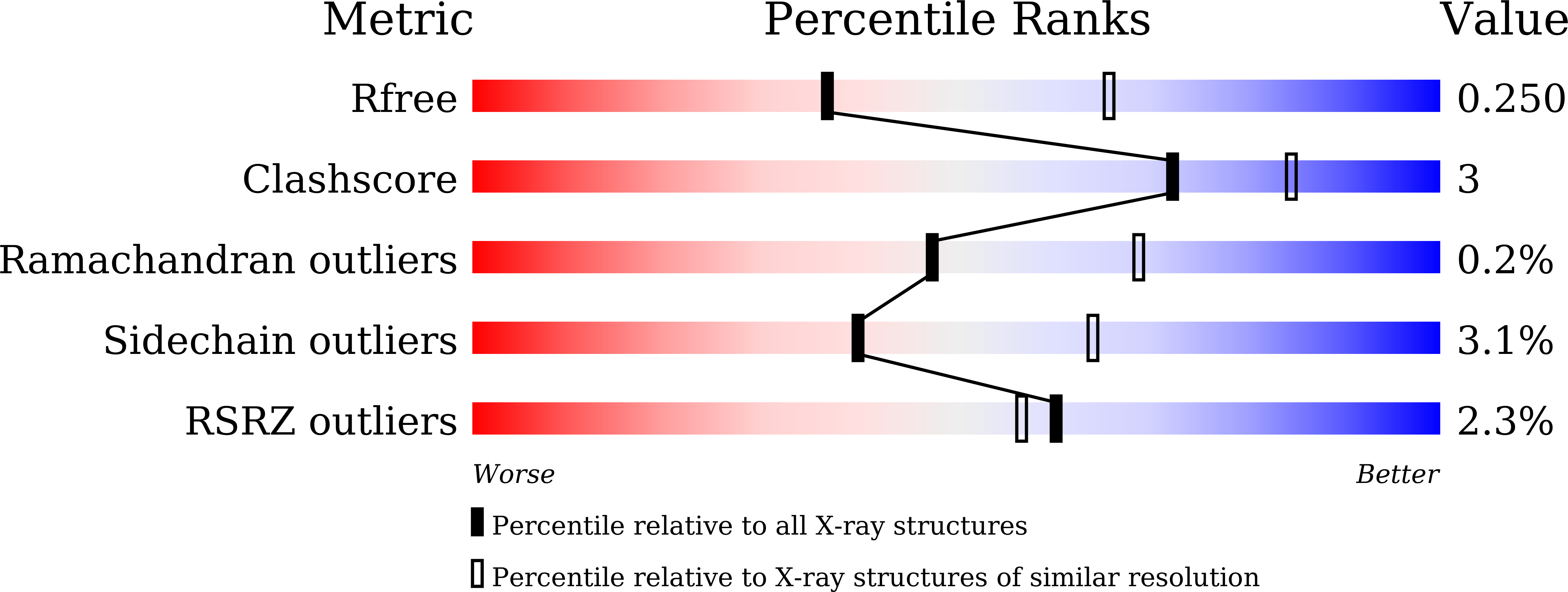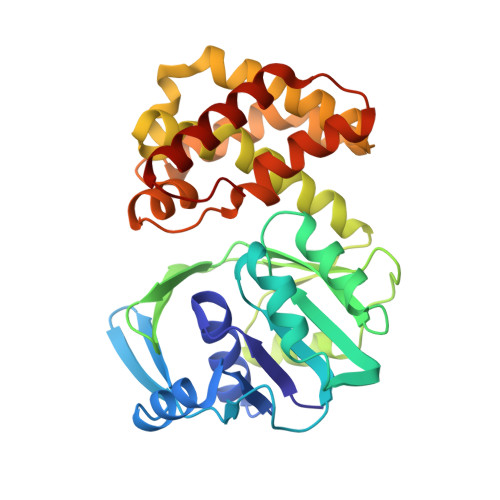Genome-wide survey and crystallographic analysis suggests a role for both horizontal gene transfer and duplication in pantothenate biosynthesis pathways.
Khanppnavar, B., Chatterjee, R., Choudhury, G.B., Datta, S.(2019) Biochim Biophys Acta Gen Subj 1863: 1547-1559
- PubMed: 31136784
- DOI: https://doi.org/10.1016/j.bbagen.2019.05.017
- Primary Citation of Related Structures:
5ZIK, 5ZIX - PubMed Abstract:
Pantothenate is the metabolic precursor of Coenzyme A, an indispensable cofactor for many fundamental cellular processes. In this study, we show that many bacterial species have acquired multiple copies of pantothenate biosynthesis pathway genes via horizontal and vertical gene transfer events. Some bacterial species were also found to lack panE and panD genes, and depended on alternative enzymes/metabolic sources for pantothenate production. To shed light on the factors responsible for such dynamic evolutionary selections, the structural and functional characteristics of P. aeruginosa ketopantoate reductase (KPR), an enzyme that catalyzes the rate-limiting step and also the most duplicated, was investigated. A comparative analysis of apo and NADP+ bound crystal structures of P. aeruginosa KPR with orthologs, revealed that the residues involved in the interaction with specific phosphate moiety of NADP+ are relatively less conserved, suggesting dynamic evolutionary trajectories in KPRs for redox cofactor selection. Our structural and biochemical data also show that the specific conformational changes mediated by NADPH binding facilitate the cooperative binding of ketopantoate. From drastically reduced catalytic activity for NADH catalyzed the reaction with significantly higher K M of ketopantoate, it appears that the binding of ketopantoate is allosterically regulated to confer redox cofactor specificity. Altogether, our results, in compliance with earlier studies, not only depict the role of lateral gene transfer events in many bacterial species for enhancing pantothenate production but also highlight the possible role of redox cofactor balance in the regulation of pantothenate biosynthesis pathways.
Organizational Affiliation:
Department of Structural Biology and Bioinformatics, CSIR-Indian Institute of Chemical Biology (CSIR-IICB), Kolkata, India; Academy of Scientific and Innovative Research (AcSIR), India.
















